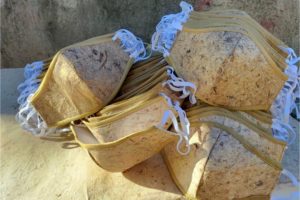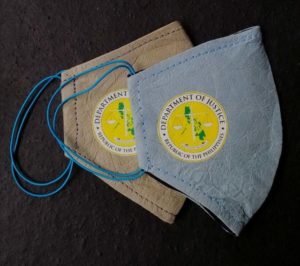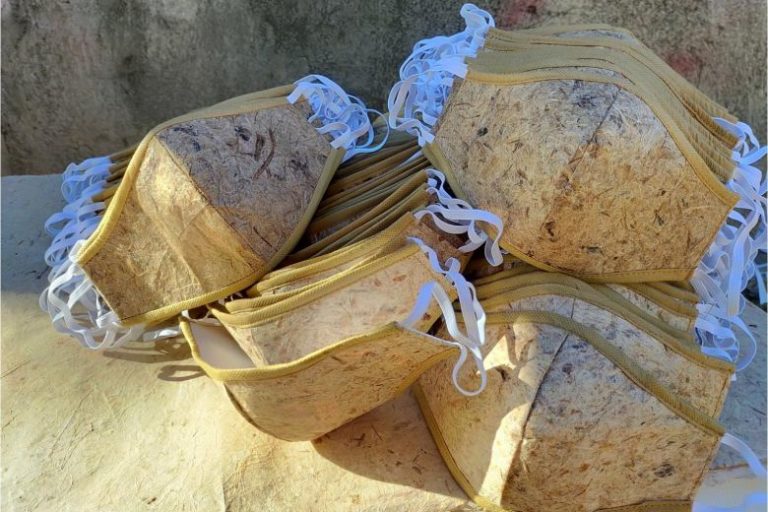Fibre from a relative of the banana tree could replace plastic in face masks and hospital gowns
Abaca is already used in teabags and banknotes
Global efforts to ban single-use plastics have retreated as nations prioritised hygiene over the environment for packaging and medical supplies, creating a bright spot for chemical companies.
Sales of disposable face masks are set to rise more than 200-fold worldwide this year to US$166 billion (S$229 billion), according to a United Nations trade article, citing consultancy Grand View Research.

However, “with this pandemic, if we all buy masks made of synthetic fibre, they will pile up in dumpsites because they take so long to decompose,”
Companies have been reluctant to replace plastic with biodegradable alternatives because of concern about cost and whether the new materials are sufficiently strong and effective for medical use.

Prospect solution: Abaca
Abaca – a fibre from the Philippines used in teabags and banknotes – that is as durable as polyester and will decompose within two months, might be the solution.
A preliminary study by the Philippine Department of Science and Technology showed abaca paper to be more water resistant than a commercial N-95 mask, and to have pore sizes within the United States Centres for Disease Control and Prevention’s recommended range to filter hazardous particles.
Abaca demand could grow exponentially this year in the Philippines, with 10 per cent of production going to medical uses, compared with less than 1 per cent last year. That shows that abaca fibre is rapidly gaining popularity, as governments and manufacturers all around the world scamper to produce more reusable and safe medical garments for healthcare professionals.
The Philippines is the world’s largest Abaca producer, supplying 85 per cent of the fibre in 2017, according to the latest data from the United Nations Food and Agriculture Organisation. Global production is projected to be worth US$100 million this year.

The making of
The fibre, stripped from the trunks of the abaca tree, was used for saltwater-resistant ship ropes and Manila envelopes in the 19th century. Up to 30 per cent of Japan’s banknotes are made of it and abaca yarn has been used in Mercedes-Benz cars.
Even though the plant fibre is more expensive to produce than plastic alternatives, manufacturers of protective health gear from China, India and Vietnam have placed new orders for the fibre over the past months, prompting Philippine fibre factories to double their output.

International demand
People see this pandemic lasting for some time, so even small companies are trying to make protective equipment, which require our fibre. For instance, one company in southern Philippines which makes greeting cards and paper from the fibre for export to the United States and Europe has shifted to making masks.
“The awareness of consumers now is higher when it comes to taking care of the environment,” said Mr Neil Francis Rafisura, general manager of Salay Handmade Products Industries. “There are people who will pay a premium for environmentally friendly products.”

Policy is an issue
Abaca production, however, cannot keep up with demand, according to Philippine fibre agency’s Mr Costales.
While he estimates that growers will increase output to 74,000 metric tons this year, that is not enough to meet even last year’s supply deficit of about 125,000 tons, he said. Part of the reason is that farmers in the Philippines lack government subsidies to raise output.
“Abaca is like precious gold for the Philippines, but it’s been often overlooked because the government prioritises crops that feed people,” Mr Costales said. “This is a missed opportunity for us.”
Maker Faire Rome – The European Edition has been committed since eight editions to make innovation accessible and usable to all, with the aim of not leaving anyone behind. Its blog is always updated and full of opportunities and inspiration for makers, makers, startups, SMEs and all the curious ones who wish to enrich their knowledge and expand their business, in Italy and abroad.
Follow us, subscribe to our newsletter: we promise to let just the right content for you to reach your inbox



















































































